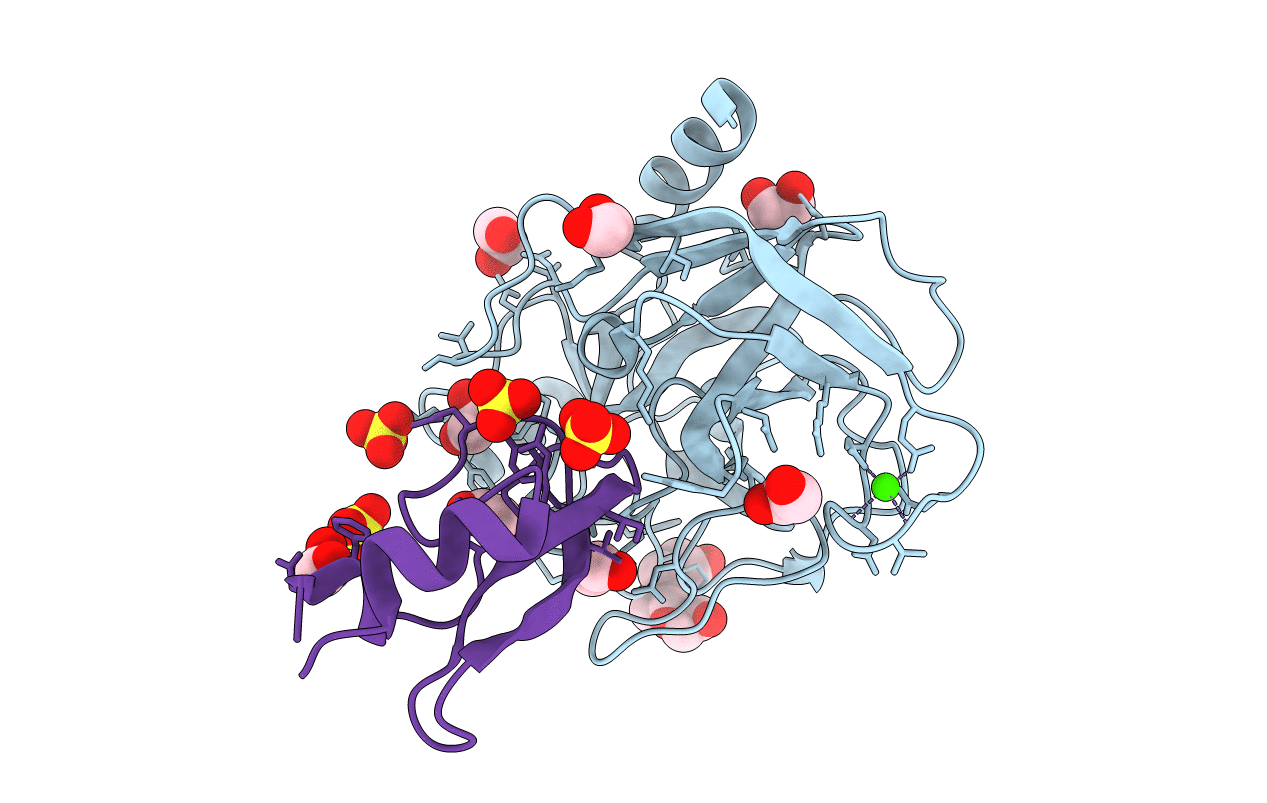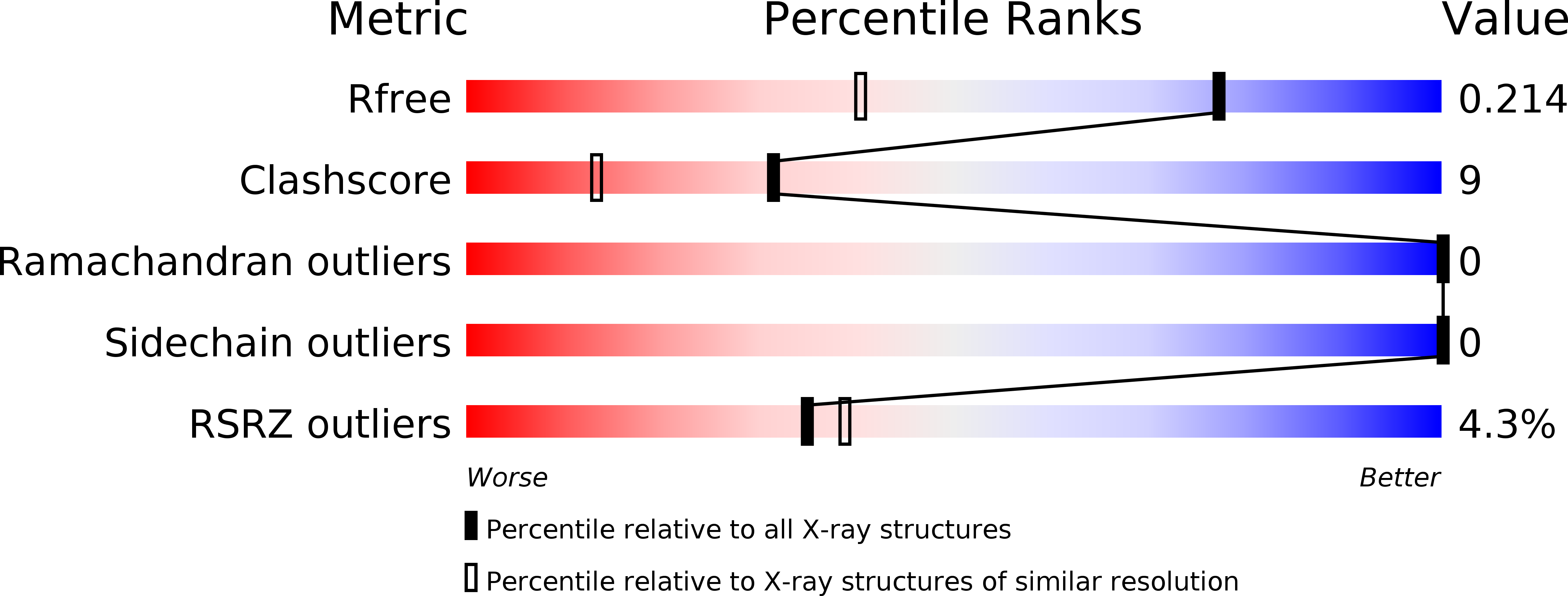
Deposition Date
2009-01-04
Release Date
2009-02-17
Last Version Date
2024-10-30
Entry Detail
PDB ID:
3FP6
Keywords:
Title:
Anionic trypsin in complex with bovine pancreatic trypsin inhibitor (BPTI) determined to the 1.49 A resolution limit
Biological Source:
Source Organism:
Rattus norvegicus (Taxon ID: 10116)
Bos taurus (Taxon ID: 9913)
Bos taurus (Taxon ID: 9913)
Host Organism:
Method Details:
Experimental Method:
Resolution:
1.49 Å
R-Value Free:
0.20
R-Value Work:
0.18
R-Value Observed:
0.18
Space Group:
P 32 2 1


